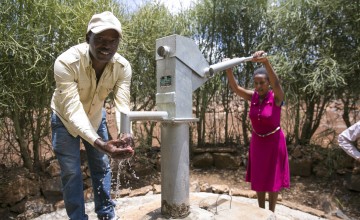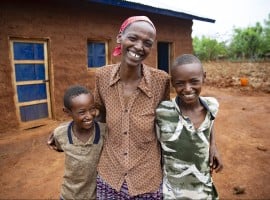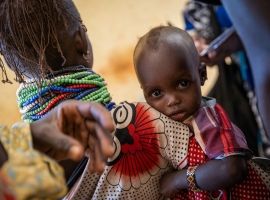
Read our 2023 annual report

Knowledge Hub
There isn’t much we can do without water. But that’s what billions of people have to do.
Water is life. It keeps our organs and internal systems healthy and functioning, to the point that the adult human body is as much as 60% water. It keeps us healthy from the outside as well when we wash our hands and clean our homes. It keeps plants and crops growing, it keeps other animals in our ecosystem, and, as lakes, rivers, and oceans, it forms its own ecosystems.
We can’t do much without water. However, that’s the reality for about a quarter of the world’s population. In 2023, the UN’s World Water Development Report revealed that 2 billion people (26% of the world’s population) don’t have access to safe drinking water. Additionally, 3.6 billion people (46% of the global population) don’t have access to adequate sanitation. A lack of access to adequate water, sanitation, and hygiene (also known as WASH) affects fully half of the world every month.
This global water crisis is unprecedented and threatens to leave even more people dry. Here are 10 facts you need to know.
1. 26% of the world’s population lack access to safe drinking water — but that’s not the full story
The 26% figure from the 2023 UN Water report is stark. However, in some low-income countries on the frontlines of the water crisis, that number is much higher. In both the Central African Republic and Chad, 94% of the population lack access to safely-managed drinking water.
Asia and Africa are the two continents most affected by this shortage. Most recent regional data from 2020 showed over 2 billion people in Asia facing a lack of clean drinking water. It also revealed that just 39% of the population of Africa was using safe drinking water (the only country on the continent with adequate access was Egypt).
2. At least half of the global population deals with water shortages at least once a month
Water scarcity happens at different levels. All told, the UN estimates that 50% of the world’s population (if not more) deals with water shortages at least once a month. Even countries with adequate water resources experience shortages, due to any number of causes, including natural disasters, contamination, and conflict.
This hits close to home: The Environmental Protection Agency notes that Ireland has one of the highest water availability rates in Europe. However, “there is an imbalance between the places where water availability is the greatest (the west of Ireland) and where water is most needed (the East of Ireland),” owing in large part to the antiquity of the country’s water supply system. A recent article in the Irish Times reveals that one single, 50-year-old water pipe, located in Kildare, delivers 40% of Dublin’s water supply and has at least 25 leaks. It could, as Irish Water chairman Jerry Grant told the Times, “blow up in the morning,” which would create havoc for hundreds of thousands of people.

3. The global water crisis is not just about climate change (although that’s a big part of it)
The climate crisis is undoubtedly linked to the water crisis. However, it’s not the only cause. As the number of conflicts around the globe continues to increase, this also has an impact on water access. In Ukraine, UNICEF has reported that 6 million people — over 15% of the population — are facing water scarcity, particularly on the frontlines of the conflict where supplies have been shut off and infrastructure has been attacked.
This creates a knock-on effect that leaves many families — especially those with the least amount of safety net or financial security — with a difficult decision to make: Spend a large portion of their available funds on bottled water, make do with contaminated water, or go without entirely.
4. It also goes beyond drinking water
Safe and potable drinking water is one of the key concerns with water scarcity. However, sanitation and hygiene are also two vital pieces of the puzzle. As we were reminded with the COVID-19 pandemic, simple handwashing is a major force for curbing the spread of communicable diseases. However, the UN notes that 3 billion people worldwide lack basic handwashing facilities in their own homes.
Likewise, proper water management is also key to limiting the spread of vector-borne diseases (like malaria or Zika virus), and waterborne illnesses (like diarrhea and polio). Without these systems in place, despite even the best of intentions, public health suffers the consequences. According to UNICEF, more than half of the world’s population uses sanitation services that leave human waste untreated, and roughly 8% of the world’s population still practices open defecation. Poor sanitation has facilitated several global cholera epidemics (including the current one). It can even bring back diseases that had otherwise been eradicated from a country or region: Last year, amid a failing sanitation infrastructure in Gaza, UNICEF confirmed traces of the poliovirus in local sewage samples.
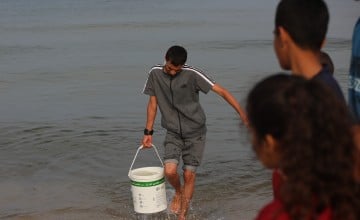
5. Water scarcity has an outsized impact where it matters most
WASH services matter especially in healthcare, where simple sanitiser can be the difference between life and death. Yet, per the UN, two out of every five healthcare facilities around the world have no soap and water or alcohol-based hand-rub. Medical supplies and equipment are often at a premium during emergencies, such as a conflict, a natural disaster, or a more routine surge in healthcare needs, such as spikes in childhood malnutrition during the lean season between harvests.
Access to water can also be a major threat to education, particularly for students who reach puberty and need safe and sanitary facilities during menstruation. Water scarcity is also a very basic symptom of period poverty.
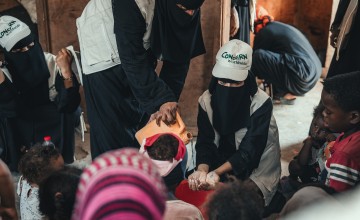
6. The water crisis is an intersectional crisis
As we mentioned above, the water crisis is also a global health crisis: More than 1 million people die every year due to diseases that would be preventable with access to quality WASH services. The health impacts of the water crisis are especially strong for children under the age of five, the elderly, and people with preexisting health conditions (including pregnant people). Water-related diseases account for roughly 2.8% of all maternal mortalities every year — and over 8% of all child mortalities under the age of 5.
The water crisis is also an issue for women and girls, who are generally the ones responsible for collecting water when none is available at home. UNICEF estimates that women and girls spend upwards of 200 million hours fetching water — every day.
The water crisis is also an economic crisis at both the macro and micro levels. An estimated $260 billion is lost each year due to a lack of basic WASH services. Low-income families suffer the most from these shortages. However, the UN points out that every $1 invested in WASH brings a $4 return in costs (and then some).
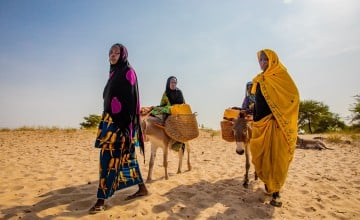
7. Only 0.3% of the world’s water can be used by humans
How are we in such a crisis or scarcity when over 70% of the Earth is water? One of the main issues is that, despite an abundance of H2O, less than half a percent of it is usable by humans. Only 3% of the earth’s water is freshwater (not saltwater), and most of that 3% is contained in glaciers and ice caps. That leaves roughly 0.3% of water that is accessible for humans to use and consume.
Of the water available to us, approximately 70% goes into agriculture. However, that’s a global average. In south Asia, that figure jumps to over 91%. In the Middle East and North Africa, agriculture accounts for over 85% of all freshwater used by humans, and in sub-Saharan Africa, it makes up nearly 81% of all freshwater usage. Industry also takes up some freshwater usage, leaving domestic use trailing behind and using whatever is left over. In south Asia, that’s just 2%. (For comparison: In Europe and Central Asia, domestic use accounts for 33.5% of freshwater consumption.)
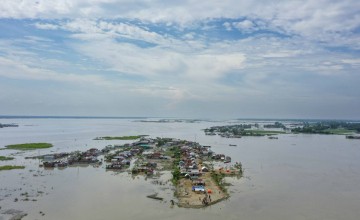
8. By 2025, 1.8 billion people are likely to face “absolute water scarcity” (and it gets worse from there)
So why is the problem getting worse? Part of the issue is population growth: Water is a finite resource and we are growing as a population, placing pressure on that precious 0.3% when it comes to WASH as well as sectors like agriculture (we also need to feed our growing population). The Food and Agriculture Organisation predicted that, by 2025, 1.8 billion people are likely to face “absolute water scarcity,” meaning that they will have to live with less than 500 cubic meters of water per person per year. (An additional two-thirds of the global population could be living with “water stress” — between 500 and 1,000 cubic meters of water per person per year.) UN Water predicts that water scarcity could displace 700 million people by 2030, placing even more strain on resources.
The majority of people expected to suffer the most from these shortages are, again, low-income families. As the FAO notes, water scarcity is dynamic: “It intensifies with increasing demand by users and with the decreasing quantity and quality of the resource.” The right interventions can also help with decreasing demand and increasing availability.

9. Access isn’t enough
Having access to water, sanitation, and hygiene isn’t enough. Water is an infrastructure that needs to be consistently maintained and monitored to ensure that people are accessing water that is safe to use. This is one of the issues currently facing Dublin’s water system, which may have worked well 50 years ago, but ignores the significant population growth since then.
As we also noted above, water scarcity is also an intersectional issue. While many countries have improved their overall numbers in terms of water access, the furthest behind are still, well, the furthest behind. (A water crisis in Dublin would have the greatest impact on low-income families who would have fewer resources to cope with a decrease in supply and increase in demand.)
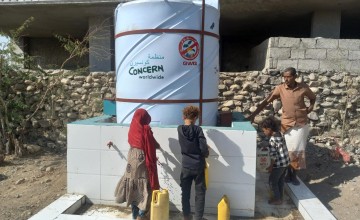
10. There are solutions in place
The figures are grim, but there is hope: There are solutions to water stress and scarcity that work in both the short and long terms. Concern works with local communities to preserve and improve the quality of existing water supplies, using desalination and water purification tablets. We work with farmers to find more effective irrigation methods to free up some of that 70–90% of water otherwise being used for agriculture using techniques like Climate Smart Agriculture and rainwater harvesting systems.
We have also constructed thousands of wells to increase community access, pairing these with the establishment of local water committees. These community-led committees are trained to maintain their water points and collect small dues from those who use the wells and pumps to cover the costs of future repairs and servicing. These are small steps, and ultimately the water crisis will not be solved without political solutions, but they are helping to save both water and lives.
